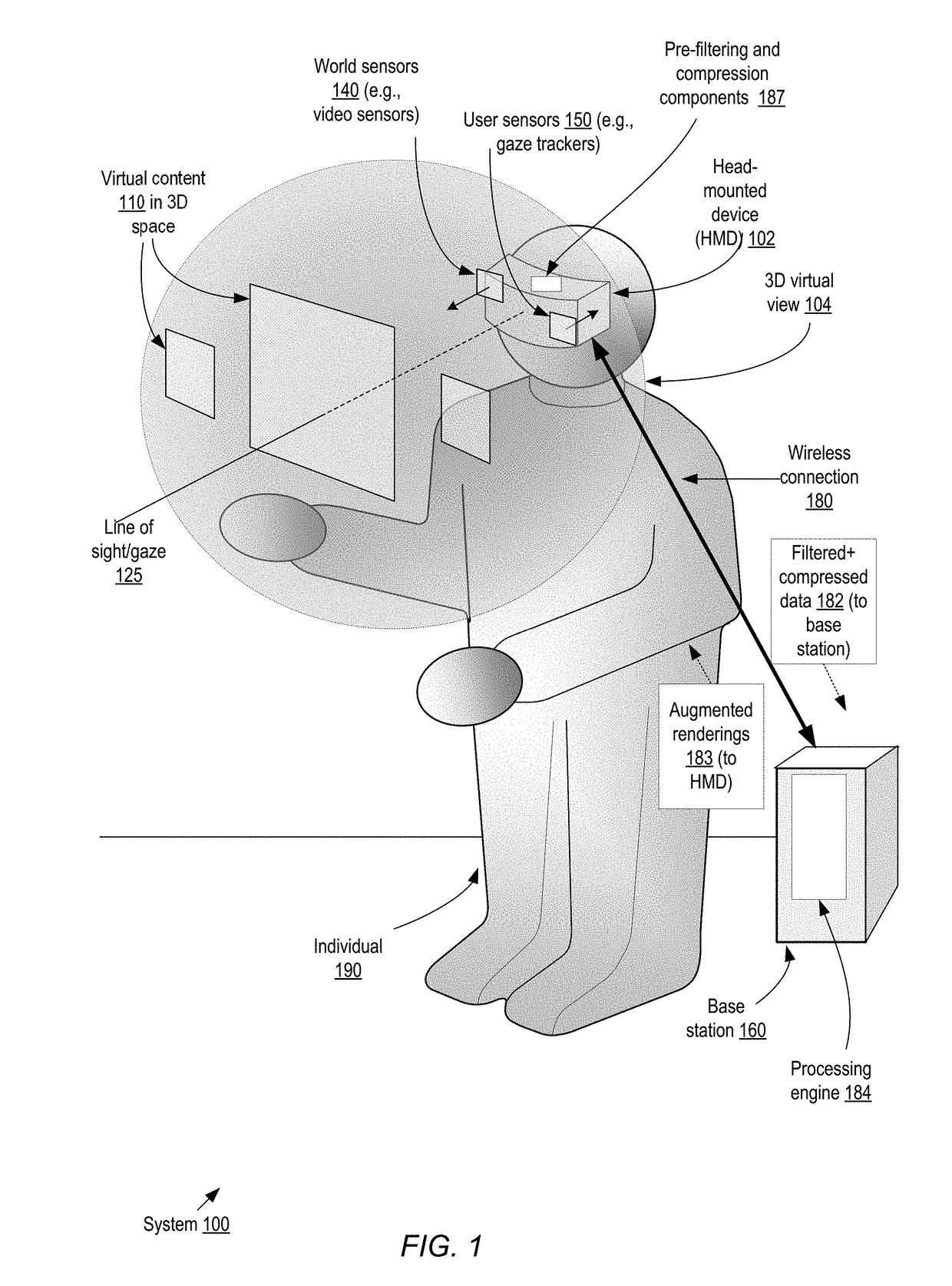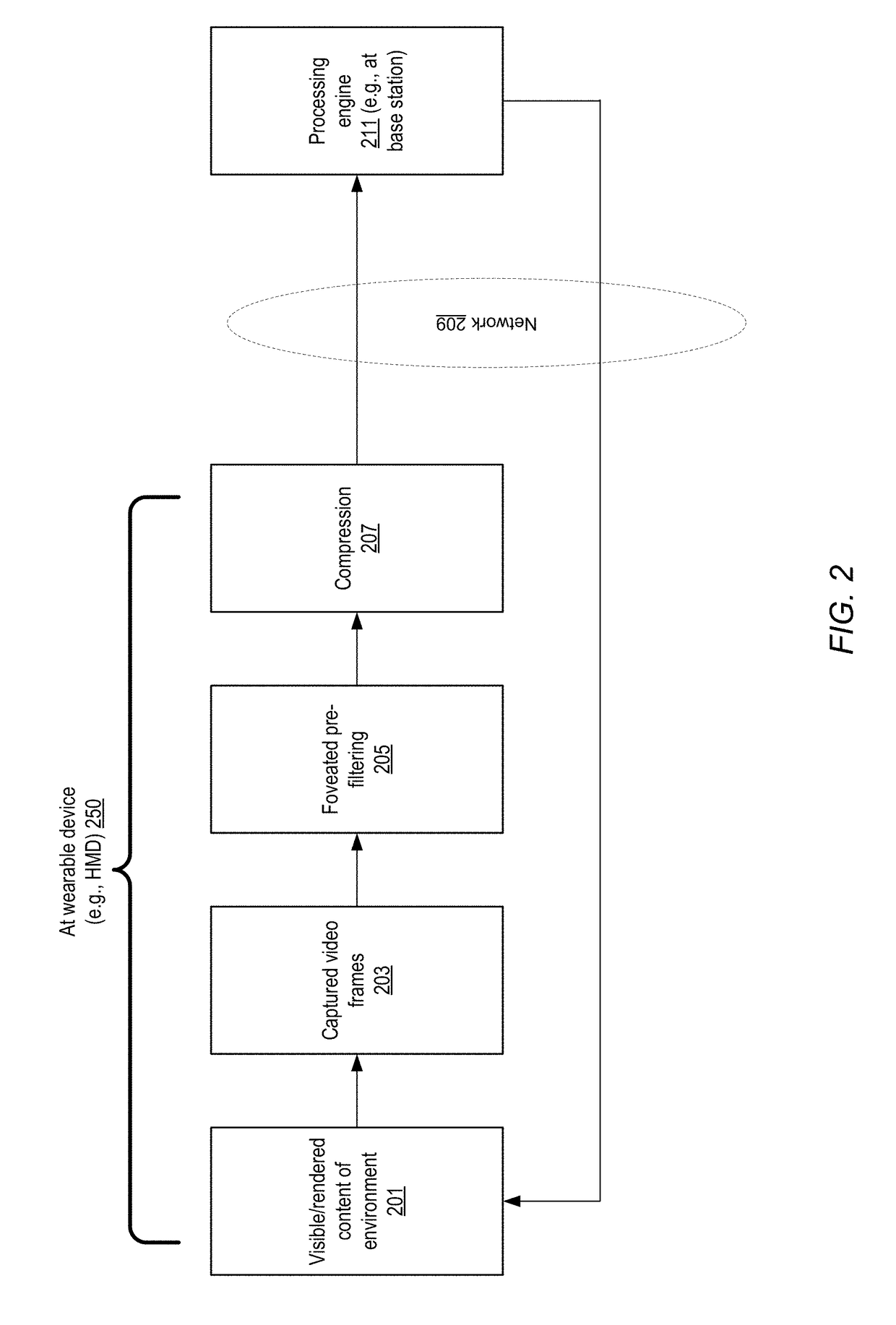Gaze direction-based adaptive pre-filtering of video data
a technology of video data and pre-filtering, applied in the field of system and algorithm for processing and transmission of video data, can solve problems such as non-trivial technical challenges in application, and achieve the effect of reducing the total amount of data and great sharpness
- Summary
- Abstract
- Description
- Claims
- Application Information
AI Technical Summary
Benefits of technology
Problems solved by technology
Method used
Image
Examples
Embodiment Construction
[0004]Various embodiments of methods and apparatus for gaze direction-based pre-filtering of video data are described. In at least some embodiments, the filtering techniques may take advantage of the fact that the visual acuity or precision of perception in the human visual system typically decreases as a function of the angular distance away from the central direction of the gaze—the portion of a visible scene which is sensed using a centrally-located region of the retina called the fovea is typically perceived with greater sharpness than portions of the scene sensed using portions of the retina that are located away from the fovea. Taking this biological phenomenon into consideration, video data which is to be transmitted over a network may be pre-filtered (prior to compression) using a configurable multi-layer low-pass filter in various embodiments, with outer or peripheral regions of the visible scene being filtered at lower resolution settings relative to the inner or central r...
PUM
 Login to view more
Login to view more Abstract
Description
Claims
Application Information
 Login to view more
Login to view more - R&D Engineer
- R&D Manager
- IP Professional
- Industry Leading Data Capabilities
- Powerful AI technology
- Patent DNA Extraction
Browse by: Latest US Patents, China's latest patents, Technical Efficacy Thesaurus, Application Domain, Technology Topic.
© 2024 PatSnap. All rights reserved.Legal|Privacy policy|Modern Slavery Act Transparency Statement|Sitemap



